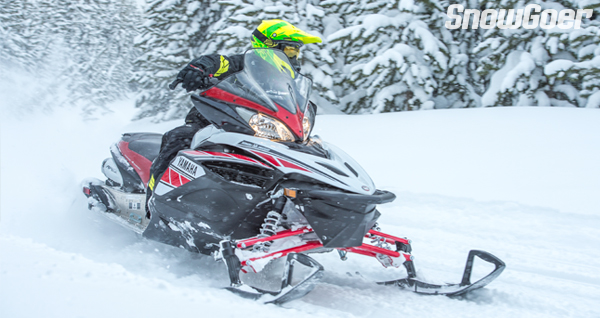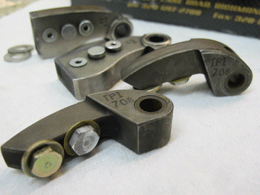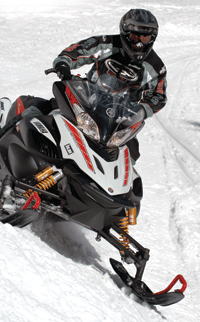Yamaha first released its Apex RTX in 2006 aimed at the rough-trail crowd, but learned quickly that the Mono Shock RA suspension was not the right equipment for riders who don’t slow down when the trail turns rough.
The Apex RTX was upgraded with the company’s ProActive CK rear suspension for the 2007 model year. The ProActive CK first appeared under the 2006 Nytro. Yamaha said its suspension calibrations to the one fastened under the Apex tunnel was co-developed with cross-country racer Corey Davidson. The torsion-spring skid made a dramatic improvement in rough bump performance over what the Mono Shock offered, but rough-trail performance remained lackluster compared to other manufacturers’ rear suspension setups.
We made our Apex RTX a better rough-trail sled with help from TeamFAST of Eveleth, Minnesota, with it’s Air-Wave suspension. The reason we named this suspension system our recipient of our Aftermarket Innovation Award last spring was simple: the skid erased bumps that we passed over on the RTX. We could ride it faster than any other sleds in rough conditions, much of it due to the air-cushioned ride front and rear.
Though Yamaha’s other front shock packages make the Deltabox II chassis more stable when cornering, the Fox FLOAT front shocks pull good anti-bottoming duty. It’s a good shock package for the RTX and we love the simple air-pump adjustment of the FLOATs. We’re accustomed to more inside ski lift on the RTX than other Apex models, but it’s a compromise made for the increased ability of the front end to handle the harsh terrain this customer seeks.
For the Air-Wave, a console-mounted switch changed the suspension spring rate with its air pressure inside the expandable air chamber. With the FLOAT shocks we could bleed off or pump up pressure as conditions warranted.
The increased ride height of the Air-Wave affected handling. We couldn’t corner as aggressively as with the stock skid, but our “comfort” rating would be no better than medium if we left the stock skid in place. The increased ride comfort and bump performance from the Air-Wave changed the entire ride experience of the RTX.
We’ve been thrilled with the ergonomics on the Apex models since its release. Seats are a good shape, provide all-day comfort and the riding position and handlebars are tops. Specific to this package, the stock window was worthless so we ditched it in favor of a Cobra windshield from PowerMadd.

There’s little we can say about the engine that hasn’t been said before. We love the smooth power from the Genesis 150FI, named for its horsepower spec and fuel delivery. It runs as hard as conditions allow and yields a fabulous exhaust note. After a day directing the action under the hood, riders don’t smell like oil-injected soot.
Like so many riders, we took a great sled and with our upgrades made it a better sled that was even more suited to how we wanted to ride it. As for problems, we had none. We ran the season putting a total of 2,026 miles on the same belt, and aside from a new set of carbides, we added fuel, turned the key and enjoyed the ride.



